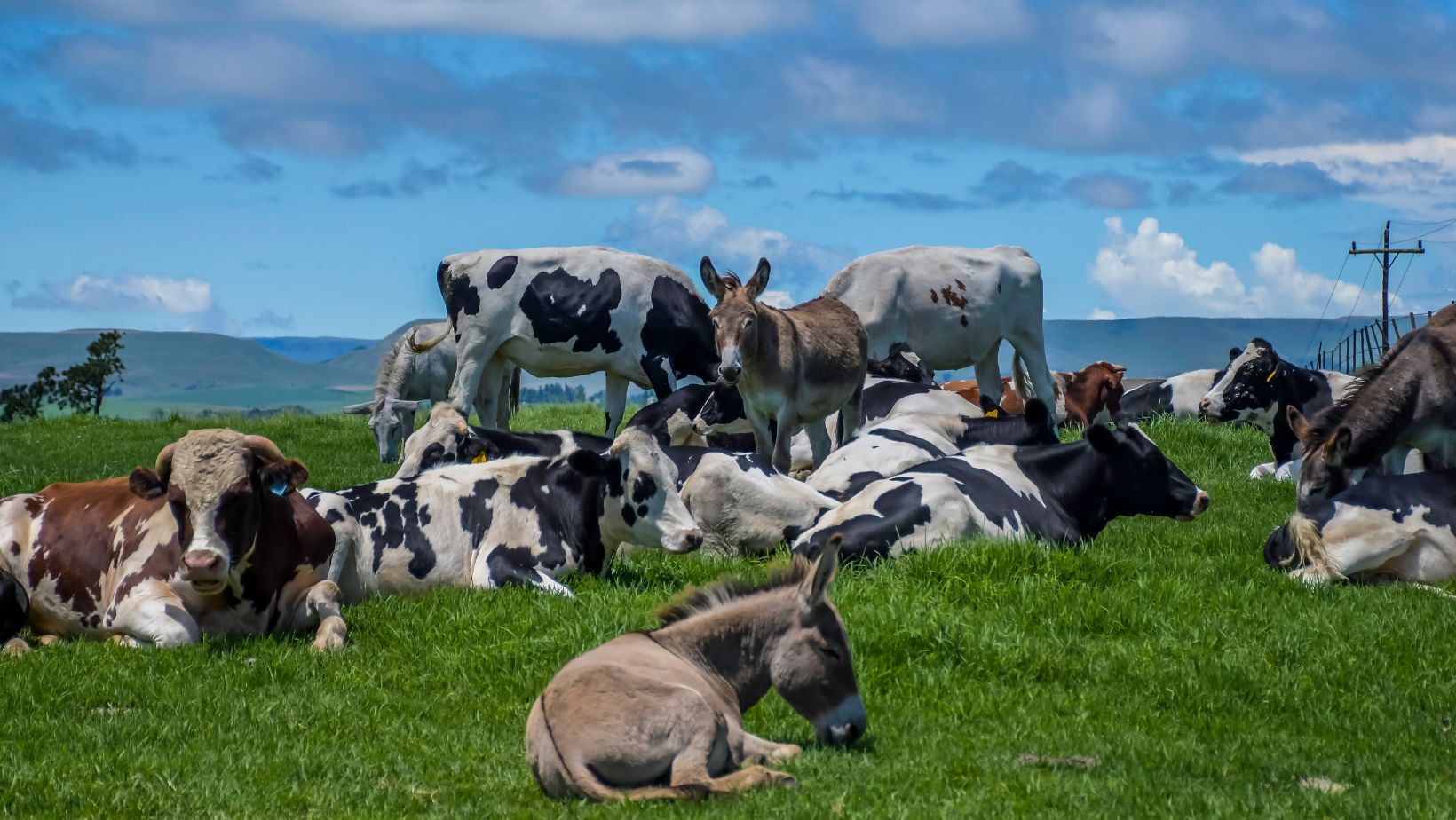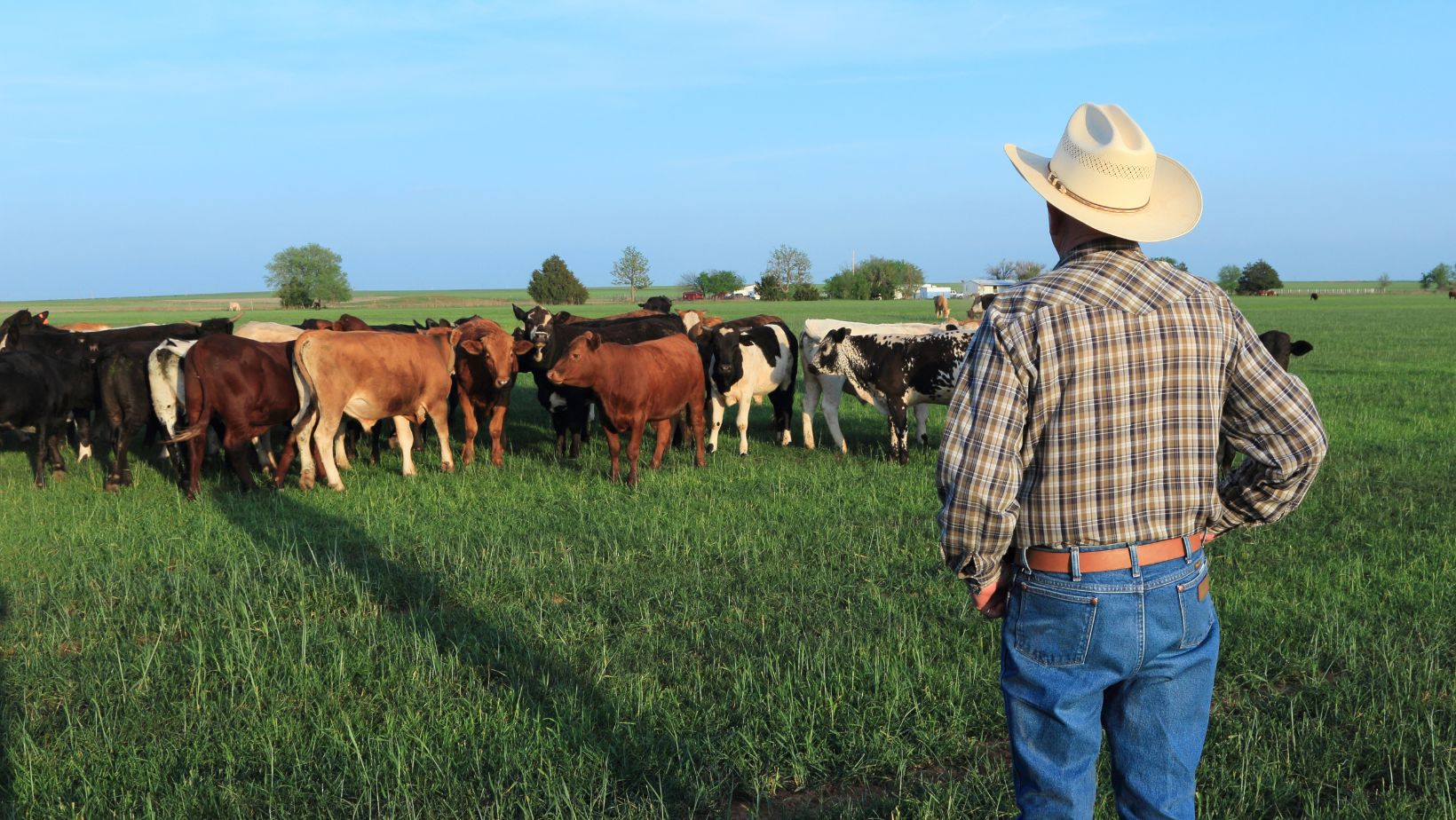Sustainable animal agriculture stands at the forefront of modern farming practices as consumers demand more environmentally conscious food production methods. This approach combines traditional livestock management with innovative techniques to minimize environmental impact while maintaining profitable and ethical farming operations.
In recent years farmers and ranchers have embraced sustainable practices like rotational grazing improved waste management and resource-efficient feed production. These methods not only reduce the carbon footprint of livestock operations but also promote animal welfare and help preserve natural ecosystems. By implementing these practices agricultural businesses can meet the growing global demand for animal products while protecting the planet for future generations.
Sustainable Animal Agriculture
Sustainable animal agriculture integrates responsible livestock production methods with environmental stewardship to create long-term ecological balance. This farming approach combines traditional animal husbandry with modern conservation techniques to maintain productive agricultural systems while protecting natural resources.
Key Principles and Practices
Sustainable animal agriculture operates on five core principles:
- Rotational Grazing: Moving livestock between pastures to prevent overgrazing enables natural grass regeneration
- Resource Optimization: Using locally sourced feed materials reduces transportation emissions by 40%
- Waste Management: Converting manure into organic fertilizers recycles 85% of farm nutrients
- Water Conservation: Implementing efficient irrigation systems cuts water usage by 30%
- Biodiversity Protection: Maintaining native plant species creates habitats for 15-20 local wildlife species
- Carbon Footprint
- Methane capture systems reduce greenhouse gas emissions by 50%
- Solar-powered farm equipment decreases fossil fuel dependency by 35%
- Carbon sequestration in pastures offsets 25% of livestock emissions
- Water Management
- Rainwater harvesting systems collect 60% of required water
- Precision irrigation reduces water waste by 45%
- Buffer zones protect local waterways from contamination
- Land Use Efficiency
- Multi-species grazing maximizes pasture utilization by 70%
- Silvopasture systems combine trees with grazing areas
- Strategic crop rotation improves soil health by 40%
| Environmental Metric | Traditional Farming | Sustainable Methods | Improvement |
|---|---|---|---|
| Water Usage | 100 gallons/animal | 60 gallons/animal | 40% |
| GHG Emissions | 14.5% of global | 7.25% of global | 50% |
| Soil Erosion | 2.5 tons/acre/year | 0.5 tons/acre/year | 80% |
Regenerative Grazing Systems
 Regenerative grazing systems mimic natural herbivore migration patterns to enhance ecosystem health while producing livestock. These systems integrate strategic animal movement with ecological restoration to create resilient agricultural landscapes.
Regenerative grazing systems mimic natural herbivore migration patterns to enhance ecosystem health while producing livestock. These systems integrate strategic animal movement with ecological restoration to create resilient agricultural landscapes.
Rotational Grazing Benefits
Rotational grazing maximizes pasture productivity through controlled livestock movements across divided paddocks. This management approach:
- Increases forage density by 40-80% compared to continuous grazing
- Reduces soil compaction through limited exposure periods
- Enhances plant root development during rest phases
- Creates wildlife corridors between rotated sections
- Improves carbon sequestration by 2-3 tons per acre annually
| Metric | Continuous Grazing | Rotational Grazing |
|---|---|---|
| Forage Utilization | 30-35% | 65-75% |
| Rest Period | 0-7 days | 21-45 days |
| Carrying Capacity | Base | +50-100% |
- Controls plant species composition through grazing intensity
- Increases organic matter content by 1-2% annually
- Enhances water infiltration rates by 5-10x
- Stimulates microbial activity through manure distribution
- Reduces erosion by maintaining 70% ground cover
| Soil Health Indicator | Traditional | Regenerative |
|---|---|---|
| Water Holding Capacity | 5-6% | 8-12% |
| Organic Matter | 2-3% | 4-6% |
| Microbial Biomass | Base | +200-300% |
Integrated Livestock-Crop Systems
Integrated livestock-crop systems combine animal production with crop cultivation to create efficient agricultural ecosystems. This symbiotic approach maximizes resource utilization while minimizing environmental impact through strategic integration of multiple farming components.
Circular Economy Approach
Integrated systems establish closed-loop nutrient cycles between livestock and crops for optimal resource efficiency. Animals convert crop residues into valuable manure that enriches soil fertility for future plantings. Crop rotation sequences include legumes that fix nitrogen while providing protein-rich feed for livestock. This circular model reduces external input requirements by 30-45% compared to conventional separated systems.
| Resource Efficiency Metrics | Integrated Systems | Conventional Systems |
|---|---|---|
| External Feed Inputs | -40% | Baseline |
| Fertilizer Requirements | -35% | Baseline |
| Water Usage | -25% | Baseline |
| Land Use Efficiency | +60% | Baseline |
Waste Management Solutions
Integrated systems transform waste streams into valuable resources through strategic recycling processes. Manure management systems capture methane for energy production while creating nutrient-rich organic fertilizers. Advanced composting techniques convert crop residues mixed with animal waste into soil amendments that increase organic matter content by 2-4% annually.
| Waste Management Benefits | Quantity |
|---|---|
| Methane Capture | 60-80% |
| Fertilizer Production | 2-3 tons/acre |
| Soil Organic Matter | +2-4%/year |
| Nutrient Recycling | 75-85% |
Animal Welfare in Sustainable Farming
Animal welfare practices in sustainable farming prioritize the physical health, emotional well-being, and natural behaviors of livestock. These practices promote stress-free environments that enhance animal productivity while maintaining ethical standards of care.
Housing and Living Conditions
Sustainable farming facilities provide spacious housing with proper ventilation, temperature control, and appropriate bedding materials. Barns incorporate natural lighting through skylights and windows, maintaining a 16:8 light-dark cycle that supports normal circadian rhythms. The housing areas include:
- Adequate resting spaces with dry, clean bedding materials such as straw or wood shavings
- Temperature-controlled environments between 55-75°F for optimal comfort
- Ventilation systems that maintain humidity levels at 40-60%
- Non-slip flooring materials to prevent injuries
- Protected areas from extreme weather conditions
- Enrichment areas with scratching posts, dust baths for poultry, rooting zones for pigs
- Social grouping spaces that accommodate herd or flock dynamics
- Outdoor access through rotationally managed pastures
- Foraging opportunities with diverse plant species
- Nesting areas for breeding animals
- Play structures for young animals like climbing platforms for goats
- Wallowing spaces for pigs with temperature-regulated mud baths
| Animal Welfare Metric | Traditional Farm | Sustainable Farm |
|---|---|---|
| Space per animal | 15-20 sq ft | 35-45 sq ft |
| Outdoor access | 2-4 hours/day | 8-12 hours/day |
| Enrichment features | 1-2 types | 5-7 types |
| Rest area per animal | 8-10 sq ft | 18-22 sq ft |
| Social group size | 75-100 animals | 25-40 animals |
Technology and Innovation
Modern sustainable animal agriculture leverages advanced technologies to optimize production efficiency while minimizing environmental impact. Digital solutions enable farmers to monitor livestock health precisely while reducing resource consumption through automated systems.
Precision Livestock Farming
Smart sensors track individual animal health metrics including temperature, movement patterns, feeding behavior and weight changes in real-time. Automated feeding systems dispense precise nutrient portions based on each animal’s needs, reducing feed waste by 15-20%. Environmental monitoring equipment maintains optimal barn conditions through automated ventilation, humidity control and waste removal systems.
Key precision farming technologies:
- RFID ear tags for individual animal identification and tracking
- Robotic milking systems that increase production by 10-15%
- Computer vision systems detecting early signs of illness or distress
- Smart collars monitoring vital signs and activity levels
- Automated sorting gates directing animals based on health status
Data-Driven Decision Making
Agricultural management platforms analyze data from connected devices to generate actionable insights for farm operations. Machine learning algorithms process information from multiple sources to predict disease outbreaks, optimize breeding programs and forecast production yields.
- Predictive modeling for disease prevention reducing mortality by 30-40%
- Feed optimization algorithms cutting costs by 8-12%
- Breeding program analysis improving genetic traits by 15-25% per generation
- Production forecasting with 92% accuracy
- Resource allocation optimization reducing water usage by 20-30%
| Technology Impact Metrics | Traditional Farming | Smart Farming |
|---|---|---|
| Feed Waste | 15-20% | 3-5% |
| Disease Detection Time | 48-72 hours | 4-8 hours |
| Labor Hours/Animal/Day | 12-15 minutes | 3-5 minutes |
| Water Usage Efficiency | 60-70% | 85-95% |
| Production Data Accuracy | 70-80% | 95-98% |
Economic Viability
Sustainable animal agriculture creates profitable business models through diversified revenue streams and reduced operational costs. The economic advantages stem from premium pricing for sustainably produced products and decreased dependency on external inputs.
Market Opportunities
Sustainable animal agriculture products command 15-30% higher prices in specialized markets compared to conventional products. Direct-to-consumer sales channels generate 40% higher profit margins through farmers’ markets, community-supported agriculture programs (CSAs) and online marketplaces. Premium certifications like organic, grass-fed or animal welfare approved unlock access to high-value retail chains such as Whole Foods Market and Natural Grocers.
| Market Channel | Profit Margin Increase |
|---|---|
| Direct-to-Consumer | 40% |
| Specialty Retail | 25% |
| Premium Certifications | 30% |
| Export Markets | 20% |
Cost Management Strategies
Integrated sustainable practices reduce operational expenses through efficient resource utilization. On-farm feed production cuts feed costs by 35% while rotational grazing decreases veterinary expenses by 25%. Waste-to-resource conversion systems transform manure into valuable organic fertilizers, reducing fertilizer costs by $150-200 per acre annually.
| Cost Reduction Strategy | Annual Savings |
|---|---|
| On-farm Feed Production | 35% |
| Rotational Grazing | 25% |
| Organic Fertilizer Production | $150-200/acre |
| Energy Generation from Waste | $5,000-8,000 |
| Water Conservation Systems | $3,000-5,000 |
The integration of renewable energy systems like solar panels and biodigesters reduces utility costs by 40-60%. Precision farming technologies optimize resource allocation, resulting in 20-30% lower input costs for labor, water and feed.
Modern Farming Evolution
Sustainable animal agriculture stands at the forefront of modern farming evolution. Through innovative practices like rotational grazing integrated livestock-crop systems and advanced waste management solutions farmers are reshaping the future of food production.
The combination of traditional wisdom and cutting-edge technology has created a model that’s environmentally responsible economically viable and focused on animal welfare. These practices don’t just benefit the planet – they’re proving to be smart business decisions that create lasting value for farmers and consumers alike.
As global demand for animal products continues to rise sustainable agriculture offers a clear path forward. It’s a testament to humanity’s ability to adapt and innovate while protecting the natural resources that future generations will depend on.
